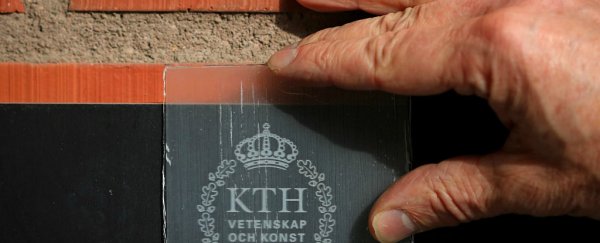Despite all our technological advances, wood remains one of our most reliable - and frequently used - building materials. And for good reason: it's strong, cheap, and, if properly managed, renewable.
But we could soon start doing a whole lot more with it, with scientists in Sweden successfully managing to made transparent wood using a technique they say would be easy to scale up. That means we could soon have tougher, wood-based windows and, even more excitingly, cheap, wood-covered solar cells.
"Transparent wood is a good material for solar cells, since it's a low-cost, readily available and renewable resource," said lead researcher Lars Berglund from the KTH Royal Institute of Technology in Stockholm. "This becomes particularly important in covering large surfaces with solar cells."
The transparent wood was created by first stripping all the lignin - a natural wood fibre found in cell walls - from the material. That makes the wood "beautifully white", the researchers explain, but doesn't help to make it see-through, seeing as wood itself blocks light.
But by embedding the white wood with a transparent polymer known as prepolymerized methyl methacrylate (PMMA), the team was able to alter its refractive index in order to achieve light transmittance of up to 85 percent - while still retaining the familiar wood structure.
While wood-based materials have been made transparent before, it's always been on the very-small scale, for example, to be used in wood-based computer chips. But this new light-weight material could have bigger applications. "No one has previously considered the possibility of creating larger transparent structures for use as solar cells and in buildings," said Berglund.
Not only would windows created out of this transparent wood be a lot less breakable than glass panes, they could also have cool properties such as semitransparency, where light would be let in but privacy would be maintained.
And for solar cells, it could bring the cost of manufacture down and improve their footprint by replacing silica-based glass with wood, while still letting in plenty of light.
The team is now working on scaling up the manufacturing process to make sure it's as cheap and easy as possible, and will also experiment with different types of wood to see if they can improve transparency. "It's attractive that the material comes from renewable sources," said Berglund. "It also offers excellent mechanical properties, including strength, toughness, low density and low thermal conductivity."
We can't wait.
The research has been published in Biomacromolecules.
